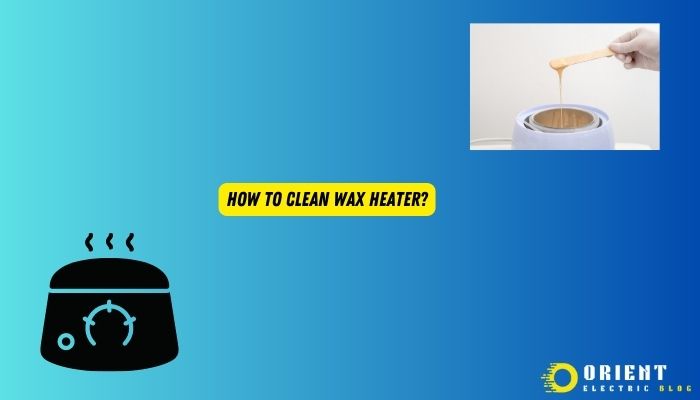If you enjoy doing their waxing, you know the significance of having a reliable wax heater. It’s essential to achieving that flawless, silky finish you’re going for. But what happens when your wax heater becomes clogged with old residue and is generally unclean?
Not only may it lead to a lack of sanitary conditions, but it can also reduce the efficiency of your wax heater. For this reason, it is necessary to clean your wax warmer regularly. In this piece, we will walk you, step by step, through the process of cleaning your wax heater so that you may get the most out of it.
At the end of this, you will understand how to properly maintain your wax heater to continue providing you with silky skin and an absence of unwanted hair for many years.

Why Do You Clean Your Wax Heater?
For several reasons, keeping your wax heater clean is essential. A pure wax warmer is, first and foremost, more hygienic. Old wax residue can accumulate over time and harbor bacteria, creating the perfect environment for germs to flourish. Sharing your wax heater with others could result in cross-contamination, skin infections, or irritations.
Furthermore, regular cleaning can help increase your wax heater’s lifespan. Wax residue accumulation can clog the heating element, making it work harder and wear out more quickly. Additionally, keeping your home clean regularly will help you identify any early-stage issues so you can fix them before they worsen.
Finally, you can get greater results by cleaning your wax heater. The wax can heat up more evenly and consistently when the wax heater is clean, ensuring that the wax is at the ideal temperature for the best outcomes. Therefore, cleaning your wax heater can benefit your waxing experience in addition to being good for your health and the durability of your equipment.
Cleaning a Wax Heater- Steps:
Although cleaning your wax heater might seem complicated, it’s easy with the correct equipment and some knowledge. To effectively clean your wax heater, adhere to the following steps:
- Unplug the wax heater: Always start by unplugging it and letting it cool before continuing. A hot wax heater should never be cleaned since doing so can be dangerous.
- Remove any remaining wax: Any leftover wax should be removed from the pot using a spatula or a wooden stick when the wax heater cools down. Take care not to nick or otherwise harm the pot’s surface.
- Clean the wax pot with a damp cloth: After all the wax has been removed, wipe down the wax pot with a damp cloth to clean it. Abrasive or strong substances that could scratch the surface should be avoided.
- Disinfectant-clean the wax heater’s body: To clean the wax heater’s exterior, use a disinfectant spray or wipes. Pay close attention to any crevices or nooks where bacteria may collect.
- Cleaning the heating element using a cotton swab: To clean the heating element of your wax heater, dip a cotton swab in rubbing alcohol. Clean off any buildup or residue that has amassed on the component.
Following these instructions, you may thoroughly clean your wax heater and ensure it’s prepared for your subsequent waxing session.
Advice on Caring for Your Wax Heater:
There are a few guidelines you should abide by to keep your wax heater in excellent condition:
- Clean your wax heater after each use: The easiest way to avoid the accumulation of wax residue is to clean your wax heater immediately after each use. Doing this will save time and effort, which only takes a short while.
- Prevent buildup by using high-quality wax: Using high-quality wax can aid in preventing the accumulation of residue in your wax heater. Cheaper waxes frequently include more ingredients and can produce more lint.
- Replace the wax pot when necessary: Replace it because it can become more challenging to clean if the surface is scratched or damaged over time. It could be time to replace your wax pot if you realize it isn’t cleaning itself.
- Avoid water on the wax heater’s electrical components: Keep water away from the wax heater’s electrical parts: Because water and electricity don’t mix, keep moisture away from the wax heater’s electrical parts. Use a moist cloth rather than one that has been soaked in water to clean the exterior of your wax heater.
These suggestions will help you maintain the best possible wax heater and ensure you have years of smooth, hair-free skin.
Conclusion:
Wax heater maintenance isn’t easy, but it’s necessary for hygiene, client health, and waxing quality. This guide should help you clean and maintain your wax heater.
To maximize wax heater use, constant maintenance is essential. You can ensure that your wax heater operates at its peak efficiency each time you use it by cleaning it thoroughly after each use, using high-quality wax, and being cautious of water exposure and potential damage. So spend some time cleaning your wax heater today for a smoother and more comfortable tomorrow.
